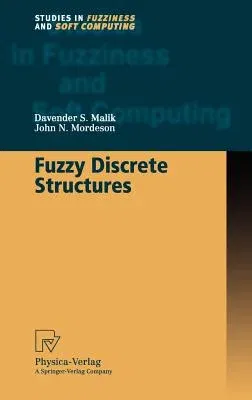This ambitious exposition by Malik and Mordeson on the fuzzification of
discrete structures not only supplies a solid basic text on this key
topic, but also serves as a viable tool for learning basic fuzzy set
concepts "from the ground up" due to its unusual lucidity of exposition.
While the entire presentation of this book is in a completely
traditional setting, with all propositions and theorems provided totally
rigorous proofs, the readability of the presentation is not compromised
in any way; in fact, the many ex- cellently chosen examples illustrate
the often tricky concepts the authors address. The book's specific
topics - including fuzzy versions of decision trees, networks, graphs,
automata, etc. - are so well presented, that it is clear that even those
researchers not primarily interested in these topics will, after a
cursory reading, choose to return to a more in-depth viewing of its
pages. Naturally, when I come across such a well-written book, I not
only think of how much better I could have written my co-authored
monographs, but naturally, how this work, as distant as it seems to be
from my own area of interest, could nevertheless connect with such.
Before presenting the briefest of some ideas in this direction, let me
state that my interest in fuzzy set theory (FST) has been, since about
1975, in connecting aspects of FST directly with corresponding
probability concepts. One chief vehicle in carrying this out involves
the concept of random sets.

